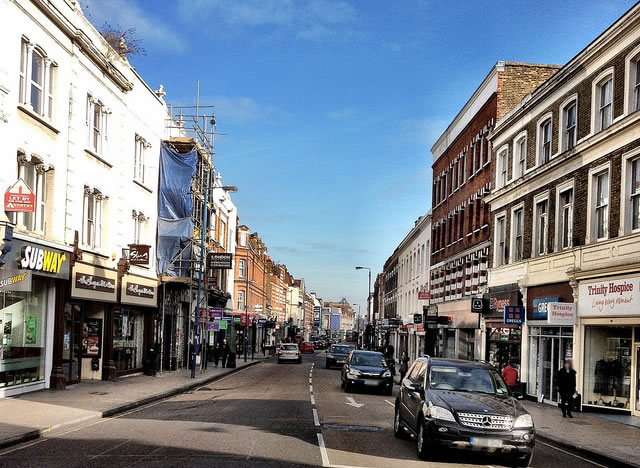Putney High Street In Top 5 Capital's Most Polluted Roads
Since ULEZ implementation outer London streets now worse than city centre

Putney High Street
New analysis by the Environmental Defense Fund (EDF) has ranked Putney High Street as one of London's the top five most polluted roads in London.
Air pollution from cars is now worse in outer London than in the city centre, Nitrogen oxide pollution – a by-product of diesel engines – is 23 per cent higher on average at locations outside London’s Ultra Low Emission Zone (ULEZ), according to the climate action non-profit.
The blend of chemicals includes nitrogen dioxide, which has been shown to worsen heart and lung disease.
The fund is responsible for a network of more than 200 air quality sensors across the city, run in partnership with the Mayor of London.
Their study found that the five worst pollution hotspots are all outside the ULEZ, with the Broadway in Ealing ranked highest.
Cromwell Road in Kingston, Romford Road in Newham, Putney High Street in Wandsworth and Euston Road in Camden were also among the worst sites in the city.
Sadiq Khan plans to extend the ULEZ to the up to the north and south circular roads next year – and three of these five worst locations will then be covered, including Putney.
But the study suggests many of London’s worst affected areas will still be outside the zone.
This includes sites where cars make the biggest to pollution – which also comes from other forms of transport like trains and planes, homes, and industrial sites.
Vehicles are by far the biggest polluters, creating almost half the nitrogen oxide across the city.
It comes with car ownership in outer London increasing to its highest level in over a decade – with almost two million registered last year.
There are now over 750,000 diesel cars in the capital, 50 per cent more than ten years ago.
Environmental Defense Fund policy and campaigns chief Oliver Lord said London needs “more ambition at local level” to tackle toxic air.
The Government must also end diesel car sales “sooner rather than later” he said – the fund is calling for a 2030 cut off for the toxic vehicles.
“There is no hiding from the magnitude of pollution from diesel cars,” Mr Lord warned.
“Increasing car ownership and a lack of policy in outer London could leave us in danger of dividing communities, and some of the most deprived neighbourhoods are at risk of being left behind in the fight for clean air.”
Zak Bond, policy officer for the British Lung Foundation, said accelerating the move away from diesel cars to 2030 was a “vital step”.
“Breathing in dirty air is bad for everyone’s health but can be particularly dangerous for those living with lung conditions,” he said.
“A spike in air pollution levels can lead to symptoms getting worse, flare-ups and even the risk of hospitalisation.
Now, more than ever, we need to protect everyone’s lungs, so we must improve air quality urgently.”
Jessie Matthewson - Local Democracy Reporter
August 21, 2020